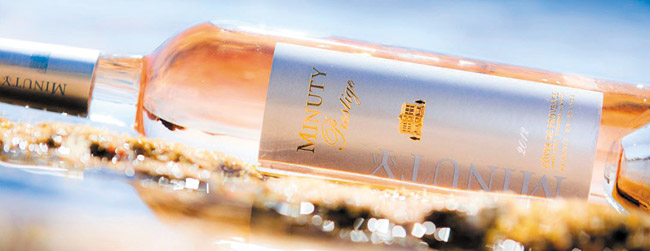The Fine Art Of Blending Wines
Like the artist who blends colors to create masterful pieces, so do winemakers blend in order to reach the highest pinnacle of their product. The art of blending is something that winemakers have practiced for centuries. And it is said to master it takes decades.
The ubiquitous red blends that populate wine shelves are nothing new. Blending grapes and/or wine is centuries old. As different grapes have different characteristics, the early blenders found that, by blending, they could create something greater than the sum of its parts.
The classic Bordeaux blend of Cabernet Sauvignon, Merlot, Cabernet Franc, Malbec and Petit Verdot is a shining example of this. Cabernet Sauvignon provides the scaffolding of structure and complex flavors, Merlot adds a fruit component and plush mouthfeel, Franc adds a spicy and herbal complexity, Malbec gives color and more depth of structure, while Petit Verdot adds even more color, tannin and a floral component.
Most Meritage or Red Wine blends borrow this idea, whether it’s Cabernet blended with Shiraz/Syrah, Sangiovese with Cabernet and Merlot; Zinfandel, Cabernet and Merlot, or whatever.
Blending grapes of different colors happens often as well. In red Chateauneuf du Pape, there are five white grapes allowed. Cote Rotie allows the addition of Viognier to Syrah. Even Chianti Classico allowed white grapes for decades until just the turn of this century. And don’t forget that most Champagnes are a blend of at least two of the three major players: Pinot Noir, Chardonnay and Meunier.
Even mono-variety wines can be blends. Winemakers can blend different clones of the same grape variety to achieve more complexity in their wine. Different clones can offer different character. Take Pinot Noir, for instance. One clone can give better color, another clone has more aromatics and yet another will have better yields.
Winemakers can blend from different vineyard sites as well. Each vineyard can express the grape differently. One parcel with more sun may have more sugar and ripeness in the grapes, while another parcel that does not get as much sun may have fresher acidity and more structure. Each vineyard could have different soils, which impact the flavors of the wine as well.
Blending vintages is another art form for which Champagne producers set the bar. Each harvest’s grapes and the resultant wine are different. They age differently, with each on its own journey and cadence. And by blending different vintages, the wine-maker can create a standardized and consistent product. Champagne might hold the torch, but the technique is utilized all over the globe, from Barefoot to Overture. The principle is the same, but maybe not the quality.
And who is to say that winemakers are the only ones who should blend their wines? (WARNING: What I am about to write may shock you.) Have you ever wondered what a wine might taste like blended with another after you have opened the bottles?
Sure, I’m the only one who thinks that. I not only have thought it, but I’ve done it. In fact, just this past weekend at a friend’s birthday party, I blended some young Champagne with an older one (2002 Taittinger Comtes de Champagne with 1928 Perrier Jouet English Cuvee) to the tune of about 1 part to 5. They were both delicious on their own, but the 2002 was too young and I just wanted a little freshness added to the 1928. The blend was terrific, if I do say so myself.
So blend away, if you like. Winemakers do it all the time.
Recommendations: 2013 Minuty Prestige Rosé, Cotes de Provence ($29) Looking for a summer rosé? This is a new one for me, 90 percent Grenache and 10 percent Tibouren, it entices with beautiful fruit and flowers on the nose with an ethereal lightness on the palate. I would recommend it with Mediterranean-inspired salads, tapenade or a friend and lighthearted conversation.
Roberto Viernes is a master sommelier.
rviernes@southernwine.com
Twitter: @Pinotpusher






